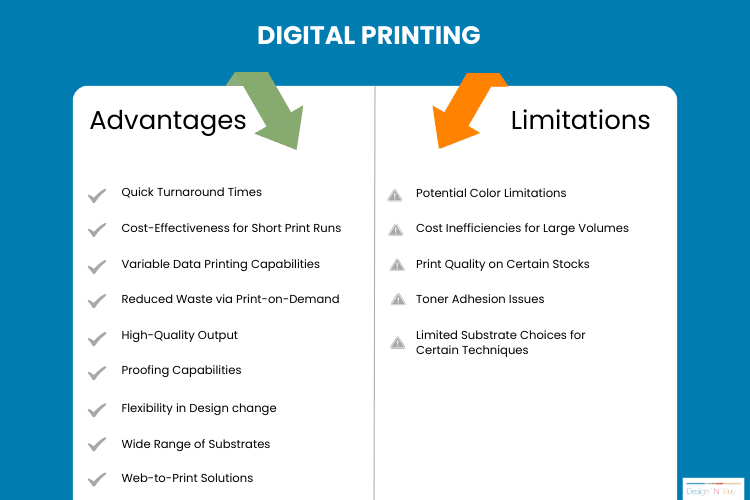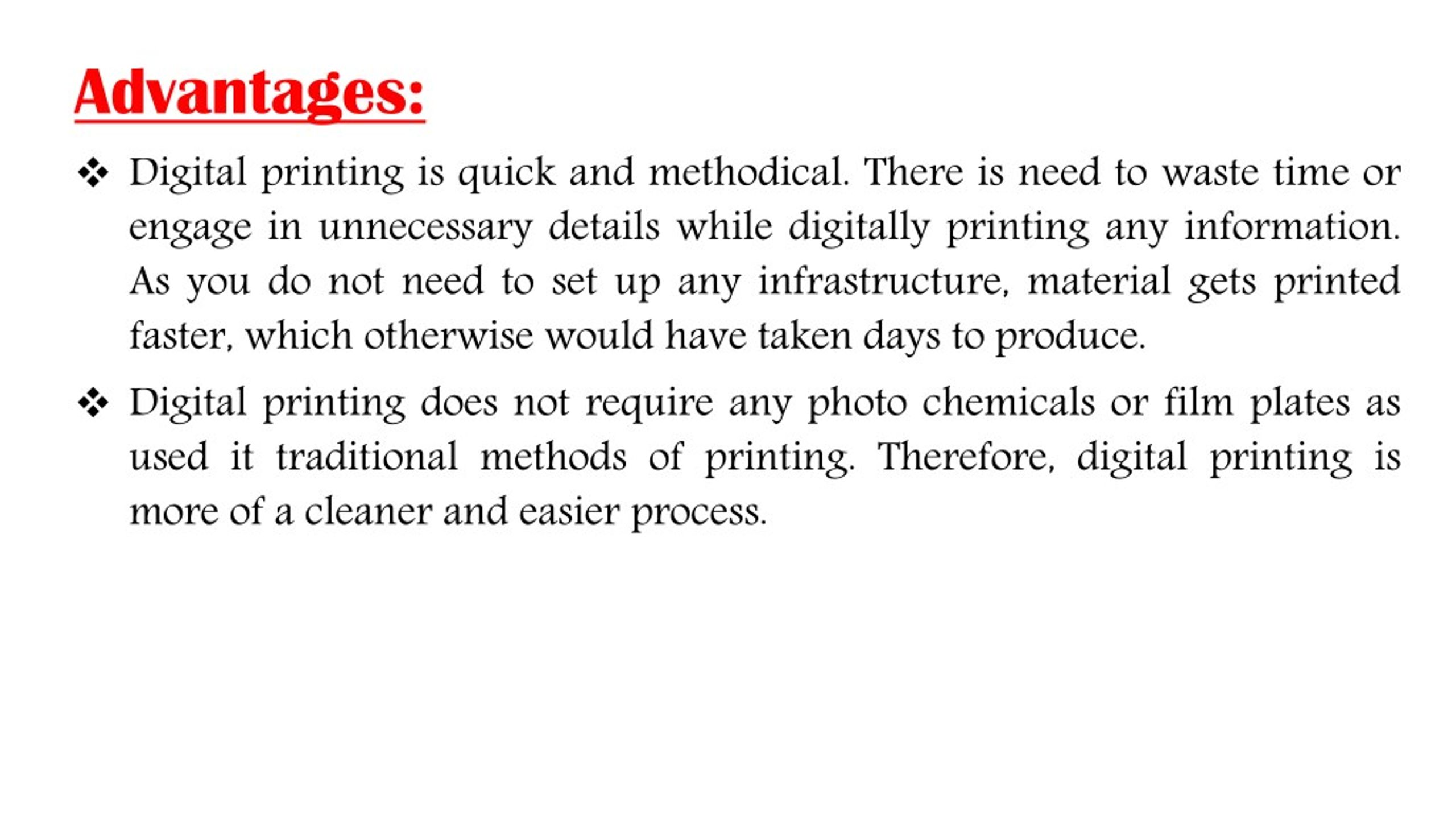The Buzz on Digital Printing
The Buzz on Digital Printing
Blog Article
Our Digital Printing Ideas
Table of ContentsThe Best Strategy To Use For Digital PrintingGetting The Digital Printing To WorkThe 10-Second Trick For Digital PrintingThe Only Guide for Digital PrintingEverything about Digital PrintingNot known Facts About Digital Printing
Variable data printing, such as straight mail with customized codes and addresses, is preferably fit for digital printing. Digital quick printing only requires 4 steps of style, testimonial, printing and binding to obtain whatever done. Digital quick printing has an unrivaled benefit: print on need.According to PMMI, digital printing allows brand names and manufacturers to react rapidly to customer demands while improving the supply chain, decreasing warehousing price and waste, and enjoying faster time to market. That all audios wonderful, but exactly how does this modern technology do all that? The major differentiator of these innovations is that there are no set-up costs and no plates with electronic printing.
The Best Guide To Digital Printing
According to Wikipedia, the best difference between electronic printing and conventional techniques such as lithography, flexography, gravure, or letterpress - Digital Printing is that there is no demand to change printing plates in electronic printing, whereas in these analog printing techniques the plates are repetitively replaced. This causes quicker turn-around time and reduces expense when utilizing electronic printing.
Quick production suggests obtaining your item to market much faster. It also suggests it's simpler and faster to make adjustments later on, when you alter a dish, include a SKU, or produce seasonal product packaging. Digital printing is highly flexible, so it's simple to make modifications to the package layout quickly. All of it returns to home plates.
With standard printing methods, short-run printing is just not feasible. Since a great style can make or break your item, electronic printing constantly creates top notch, clear and colorful graphics each time.
Digital printing is the process of printing digital-based images directly onto a selection of media substratums. There is no requirement for a printing plate, unlike with countered printing. Digital files such as PDFs or desktop computer publishing documents can be sent out directly to the electronic printing machine to publish theoretically, picture paper, canvas, material, synthetics, cardstock and various other substrates.
Digital Printing - An Overview
According to PMMI, electronic printing enables brand names and makers to respond rapidly to consumer demands while enhancing the supply chain, lowering warehousing expense and waste, and appreciating faster time to market. That all noises great, yet how does this innovation do all that? The significant differentiator of these modern technologies is that there are no set up charges and no plates with digital printing.
According to Wikipedia, the best distinction in between digital printing and standard techniques such as lithography, flexography, gravure, or letterpress is that there is no requirement to replace printing plates in digital printing, whereas in these analog printing techniques home plates are continuously changed. This results in quicker turn-around time and decreases expense when using electronic printing.

Unknown Facts About Digital Printing
Much more supply can suggest even more waste down the roadway. With traditional printing methods, short-run printing is simply not possible. Since a terrific style can make or break your item, digital printing constantly develops high-quality, clear and colorful graphics each time. Digital printing on adaptable pouches includes the intense, vivid, and accurate graphics that virtually beckon consumers to reach out and touch them.

According to PMMI, electronic printing enables brand a fantastic read names and makers to respond rapidly to client demands while boosting the supply chain, reducing warehousing expense and waste, and taking pleasure in faster time to market. That all audios great, however exactly how does this technology do all that? The major differentiator of these modern technologies is that there are no set-up costs and no plates with electronic printing.
Digital Printing - Questions
According to Wikipedia, the biggest difference in between electronic printing and traditional techniques such as lithography, flexography, gravure, or letterpress is that there is no demand to replace printing plates in digital printing, whereas in these analog printing approaches home plates are continuously changed. This causes quicker turn-around time and lowers price when utilizing electronic printing.
Digital printing is extremely adaptable, so it's easy to make adjustments to the bundle design promptly. It all goes back to the plates.

The 7-Minute Rule for Digital Printing
Digital printing is the process of printing digital-based pictures directly onto a range of media substratums. There is no need for a printing plate, unlike with offset printing. Digital files such as PDFs or desktop computer posting data can be sent directly to the digital printing press to publish on paper, picture paper, canvas, textile, synthetics, cardstock and various other substrates.
Report this page